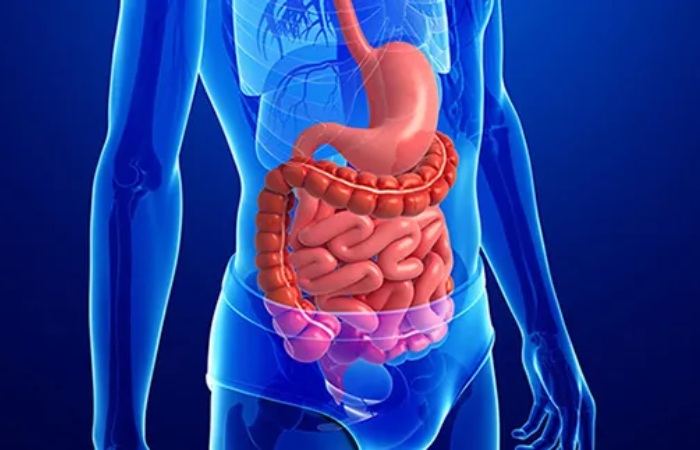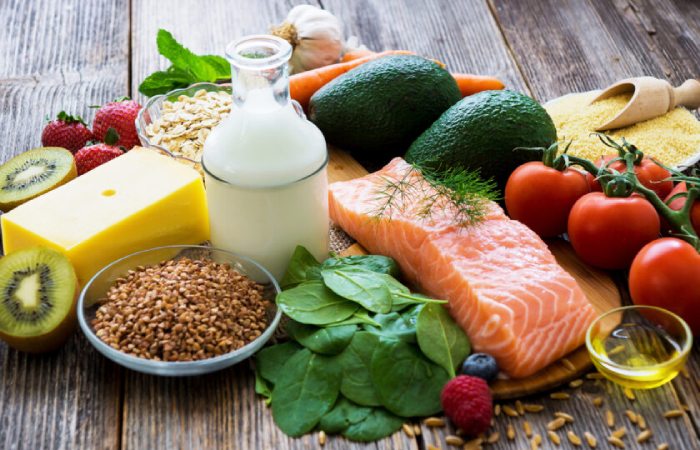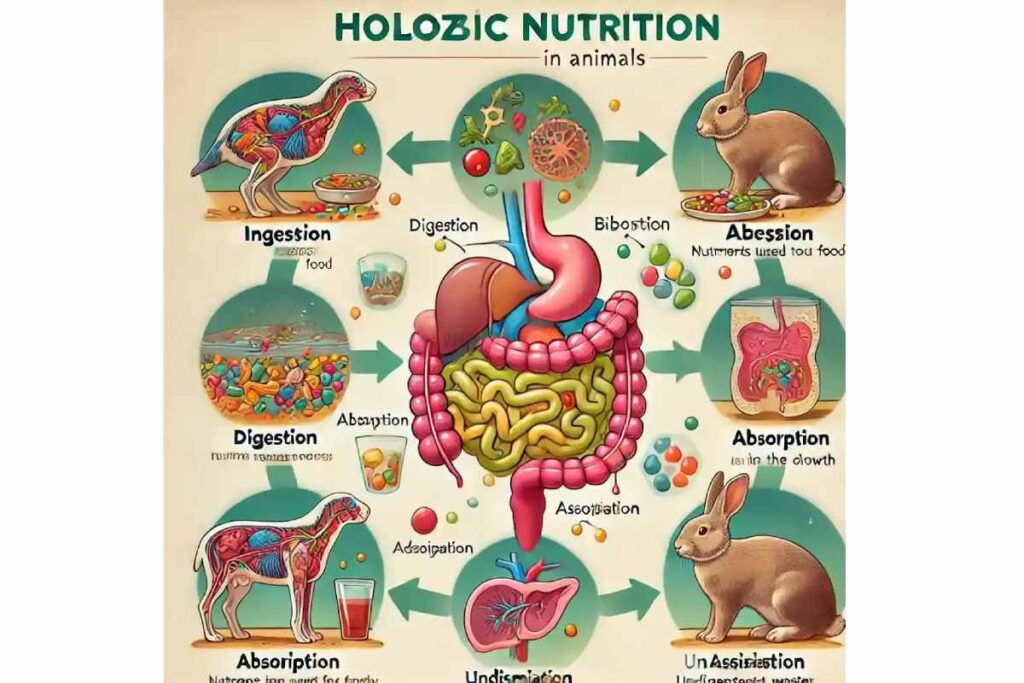Have you ever wondered why humans, animals, and even tiny microorganisms need food while plants survive on sunlight? The secret lies in Holozoic nutrition, the process that powers life as we know it. From your breakfast to a lion hunting its prey, this method of obtaining energy is essential for survival.
But what is Holozoic nutrition, and why should you care? In this article, we’ll explain it in simple terms.
What Is Holozoic Nutrition? A Basic Definition

Simply put, it is a method of nutrition in which organisms ingest solid or liquid food, digest it internally, and absorb the nutrients. The term combines the words “holo” (whole) and “zoic” (animal), emphasizing how organisms ingest whole food particles. Unlike plants, which forage for their food, holograms depend on organic matter from other sources.
Examples include humans, cows, cats, and microscopic organisms like amoebas. This process involves five steps: ingestion, digestion, absorption, assimilation, and excretion.
Let’s look at each step in detail.
How Does Holozoic Nutrition Work?
Ingestion: The First Bite
Ingestion is simply eating. Whether a person chews pizza or an amoeba ingests bacteria, this step involves getting the food into the body. Animals use their mouth, teeth, or specialized structures such as pseudopodia (amoebas).
Digestion: Breaking It Down
The food is then broken down. Mechanical digestion (chewing) and chemical digestion (enzymes) work together. For example, the stomach uses hydrochloric acid, and amoebas secrete enzymes into food vacuoles.
Absorption: Nutrient Extraction
After digestion, nutrients such as glucose and amino acids enter the bloodstream through the intestinal wall. In single-celled organisms, nutrients are distributed directly into the cell.
Assimilation: Fueling the Body
Here, cells use the absorbed nutrients to produce energy, grow, and repair themselves. Glucose feeds muscles and proteins repair tissue.
Egestion: Removing Waste
Undigested waste leaves the body in the form of feces. Humans use the rectum, but amoebas excrete waste through the cell membrane.
Holozoic Nutrition in Humans: A Complete Journey
Humans are a classic example of Holozoic nutrition. Understanding this process will help you optimize your digestion and overall health. Here’s how food moves through your body:
Mouth: Chewing breaks down food. Saliva adds enzymes.
Stomach: Acids and enzymes turn food into a semi-liquid called chyme.
Small intestine: Nutrients are engrossed into the blood.
Large intestine: Water is absorbed; Waste becomes feces.
This system ensures that each meal effectively nourishes your body. Skipping steps, such as not chewing correctly, can disrupt digestion.
Tips for Better Digestion
Chew well: This helps enzymes work more effectively.
Stay hydrated: This helps digestion and absorption of nutrients.
Eat foods rich in fiber: This promotes gut health.
Why Do Animals Rely on Holozoic Nutrition?
Unlike plants, animals cannot produce food, so they must feed on other organisms. They need ready-made food to survive. A tiger’s consumption of a deer or a cow grazing on grass depends on Holozoic nutrition. Here’s why this process is critical:
Energy requirements. Animals move, hunt, and reproduce, and they need instant energy.
No photosynthesis. Unlike plants, animals cannot produce food from sunlight.
Complex bodies. Organs such as the stomach and intestines have evolved to process solid food.
Without this process, ecosystems would collapse. Predators control prey populations and herbivores process plant matter.
Holozoic Nutrition in Microorganisms: Tiny Yet Powerful

Even single-celled organisms like amoebae and paramecia rely on holozoic nutrition:
- They surround their food with pseudopodia, forming a food vacuole.
- Enzymes digest the food inside the vacuole.
- Nutrient is distributed throughout the cytoplasm.
- Waste is released through the cell membrane.
Paramecium, another microbe, uses hair-like cilia to carry food to its throat. Food vacuoles are formed, digested, and then waste is released.
This shows that holozoic nutrition is necessary to thrive, whether organisms are large or microscopic.
Comparing Holozoic Nutrition Across Organisms
Here’s a quick comparison of how different organisms perform Holozoic nutrition:
| Organism | Feeding Method | Digestion Site | Waste Removal |
| Humans | Mouth, teeth | Stomach, intestines | Anus |
| Amoeba | Pseudopodia (engulfing) | Food vacuole | Cell membrane |
| Cow | Chewing cud | Four-chambered stomach | Anus |
| Paramecium | Cilia sweep food | Food vacuole | Anal pore |
This table shows how diverse and similar this process is in different species.
Holozoic Nutrition vs. Other Types: Key Differences
People often confuse holozoic nutrition with other nutritional patterns. Here’s how they differ:
Saprophytic: Organisms (like fungi) feed on dead matter.
Parasitic: Organisms (like tapeworms) steal nutrients from their hosts.
Holozoic: Organisms actively hunt and consume food.
Holozoic organisms have specialized digestive organs, unlike parasites or decomposers. This distinction is critical in biology, medicine, and nutritional science.
Is Holozoic Nutrition the Same for All Animals?
No! Although the basic steps (from meal to meal) remain similar, different species have adapted their digestive systems:
Herbivores are like cows: they chew and digest cellulose in a four-chambered stomach.
Carnivores are like tigers: sharp teeth tear flesh; shorter intestines digest proteins faster.
Humans (omnivores): balanced systems take care of plants and meat.
Amoebae: they have no organs! They ingest food and digest it in temporary vacuoles.
This diversity ensures that each species thrives in its niche. For example, a cow’s slow digestion extracts the maximum nutrients from grass, while a tiger’s fast digestion suits its active lifestyle.
Why Should You Care About Holozoic Nutrition?

Understanding Holozoic nutrition is not just a matter of biology but has practical applications. Understanding what Holozoic nutrition is helps you:
Improved digestive health: Knowing how digestion works helps you eat smarter.
Nutrition knowledge: Choosing nutrient-dense foods boosts energy and immunity.
Scientific innovation: Digestion research helps develop better probiotics and diet plans.
Understanding the ecosystem: Understanding how food chains support life.
Final Thoughts
Now that you understand Holozoic nutrition use this knowledge wisely to improve your eating habits. Every bite follows the same path: from ingestion to digestion to absorption.
Want to optimize your digestion? Start by chewing your food thoroughly, staying hydrated, and eating fiber-rich foods.
Do you know someone who might benefit from this article? Could you share this article with them?
Understanding how nature nourishes life helps us make better decisions — for our bodies and the planet.
Frequently Asked Questions
Can plants use Holozoic nutrition?
No. Plants use photosynthesis. There are some exceptions, such as Venus flytraps, but they are rare.
What happens if Holozoic nutrition fails?
Malnutrition, loss of energy, or death. For example, intestinal blockage can be fatal.
Do all animals have the same digestive system?
No. Cows have four stomach chambers; humans have one. Diet determines the structure.
How do amoebas survive without organs?
They use temporary food vacuoles. Enzymes break down food without complex systems.
Is Holozoic nutrition only for carnivores?
No. It is used by herbivores (cows), omnivores (humans), and carnivores (tigers).
Why don’t humans photosynthesize?
Our cells lack chloroplasts. Evolution favored mobility over food production.
Can the Holozoic diet explain food allergies?
Partially. Allergies occur when the immune organization responds to undigested proteins.


